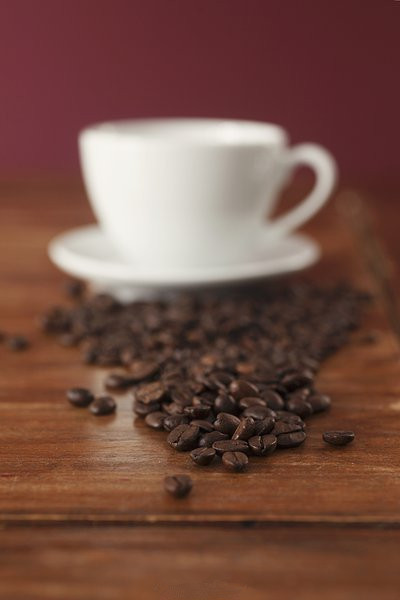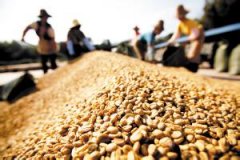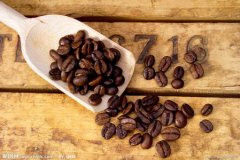Analysis of grinding or shelling process of coffee beans

Coffee beans should be ground before they are exported, that is, the endocarp of Arabian and Robbite coffee beans to be sold should be removed. The residual shell of coffee beans after removal and cleaning of endocarp and drying process is also known as peeling or peeling.
It is more difficult to remove the endocarp of coffee beans in the wet treatment than in the drying process, so different shelling machines are needed. There are mainly two types of machines: friction sheller and compaction sheller. Engelberg and African models of friction shellers are suitable for dry or wet coffee beans: in a cylindrical box, the coffee beans are squeezed between a linear strip and a knife, and the shell is scraped by a knife to reveal the beans.
Parchment coffee beans are usually shelled on a Smout friction sheller. Jules Smout is of Belgian and Scottish descent. He was born in Koenigsberg, Prussia, and settled in Guatemala. In 1844, he developed a coffee peeling machine with a rotating body with a screw, which rotates in a box with a screw, which rotates in the opposite direction. When the coffee bean is driven along the rotation, the endocarp is peeled off the coffee bean. Because the rotating body rotates relatively slowly, it produces less heat than other types of shelling machines.
Other shellers include rolling shellers (mainly used for dried coffee beans produced in South America) and crossbar shellers (with knives inside).
In other places except Brazil, the parchment coffee beans are treated with a pressing sheller instead of rubbing the sheller. Coffee beans must have moderate water content when shelling, or they may break. The pressing sheller consists of a horizontal disk rotating in a ring, and the edge of the plate is surrounded by an iron needle or rod. When the machine is running, the coffee bean comes into contact with the iron needle due to the action of centrifugal force, which makes the endocarp shell fall off.
Important Notice :
前街咖啡 FrontStreet Coffee has moved to new addredd:
FrontStreet Coffee Address: 315,Donghua East Road,GuangZhou
Tel:020 38364473
- Prev

Processing method of Fine Coffee Fruit Coffee beans Sun-drying of coffee beans
After the wet treatment, the coffee beans are still preserved in the inner pericarp, which still contains about 15% water. The endocarp must be dried to a moisture content of about 11% to ensure that coffee beans are stored in a stable and safe environment. Water content is critical, because if Arabica beans are overdried to a moisture content of 10%, they will be lost
- Next

Knowledge of grinding coffee beans knowledge of grinding coffee beans
There are three kinds of grinding methods for coffee beans: grinding, grinding and grinding. 1. Grinding: two rotating parts are used to squeeze and crush coffee beans. The grinding parts can be disc-shaped or conical. Conical machines are less noisy and less likely to block. The coffee powder produced by the grinding method is more uniform and the taste is more consistent when cooking. Design of conical Grinding Plate
Related
- Guji coffee producing area of Guji, Ethiopia: Humbela, Shakiso, Wulaga
- What is the most expensive variety of Qiloso in BOP multi-variety group?
- How to store the coffee beans bought home?
- Why are Yemeni coffee beans so rare now?
- Ethiopian Sidamo all Red Fruit Sun Sun Santa Vini Coffee beans
- SOE is mostly sour? What does it mean? Is it a single bean? what's the difference between it and Italian blending?
- Is Italian coffee beans suitable for making hand-brewed coffee?
- How to choose coffee beans when making cold coffee? What kind of coffee beans are suitable for making cold coffee?
- Just entered the pit to make coffee, what kind of coffee beans should be chosen?
- Can only Japan buy real Blue Mountain Coffee? What are authentic Jamaican Blue Mountain coffee beans?

